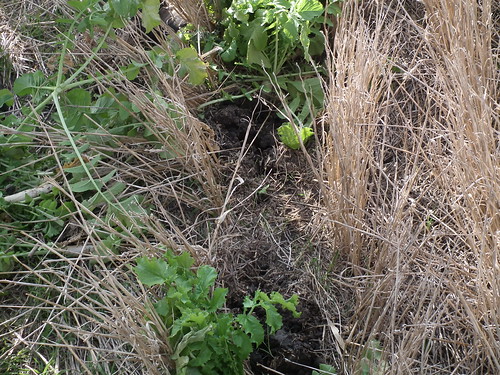Planting rows of corn alternately with rows of clover is an example of?

Image by NRCS SD
Raleigh Leesman, Farmer, Hughes County, SD – Raleigh Leesman planted a straight radish cover crop into winter wheat stubble to simulate “natural strip till.” In 2012, he is planting corn in that field. Leesman’s purpose for using the radishes was to increase biological activity specifically in the strip that would enhance residue breakdown to allow the soil to warm-up more quickly in the spring for planting corn. By using the cover crop strip–planting technique, Leesman is using the remaining wheat stubble to protect the soil between the rows of corn. This particular soil type, Promise, is a heavy clay soil. “My plan with this cover crop is to breakdown the residue in the row where the corn will be planted next spring, I am hoping the area will be a dark strip so the soil warms up quickly in these heavy clay soils,“ he said. Leesman is also using this cover crop strip-planting technique on Highmore soils which are more typical in Central South Dakota and east of the river. Leesman is evaluating the use of cover crops for “green” ways to manage his fields. “It looks like the radishes in my field will net the same effect as strip-till only without the machinery,” says Leesman. Mr. Leesman pulled up these radishes to show the length of the radish roots.
Photo by USDA NRCS SD Jason Miller, Pierre.
Question by nicca: Planting rows of corn alternately with rows of clover is an example of?
A. strip cropping.
B. terracing.
C. planting cover crops.
D. planting windbreaks.
Add your own answer in the comments!

When planting alternating rows of crops, the term is cover crops. Are you in an Ag class?
howmidoin?
November 30, 2011 at 5:01 pm
C. Planting cover crops. The clover prevents erosion of the soil between the rows of corn and allows the soil to fallow, which makes it more suitable for growing the next year. In the winter, you would till the clover into the ground and it will actually work as an organic mulch or soil amendment for planting next year’s corn. Where this year’s rows of corn are, you plant the clover for cover next year.
Paul in San Diego
November 30, 2011 at 5:54 pm
???who are you and why do you ask the question? how wide are the rows? Will you till all under after corn dies?
emmann3354
November 30, 2011 at 6:44 pm
Stupidity. The weed killer they spray on corn would kill the clover.
bob
November 30, 2011 at 7:14 pm
a
Spinky spark nut
November 30, 2011 at 7:29 pm
Cover crops
Bingalee
November 30, 2011 at 8:17 pm
Give all the city slickers on this site an F for a grade.
Alternating rows of crops is called strip cropping. A. is the correct answer.
Cover crops are something planted to protect the soil from being blown away by the wind, or washed away by rain run off. Cover crops are not planted in strips, they are planted to cover the entire field.
ranger_co_1_75
November 30, 2011 at 8:33 pm
It’s a cover crop. We used to plant two hills of corn and one of beans. Legumes will enrich the soil as will clover. Glyphosate weed killer does not hurt clover very much. It’s a good idea to let the soil rest from major crops about once every three years. Clover or legumes are a good way of doing this.
cajundude1
November 30, 2011 at 9:12 pm